Assessing a chair in 2023 based on its back support qualities is like looking at the sky through a pipe. Institutional ergonomists now tout multi-device (back and neck) support as the design priority. Esports docs hype movement and fitness as greater performance boosters than a chair. Top brands like Herman Miller are rushing out new relaxed posture seating releases. On top of it all, psychological appeal is shaping up as a major factor when choosing an ergonomic chair.
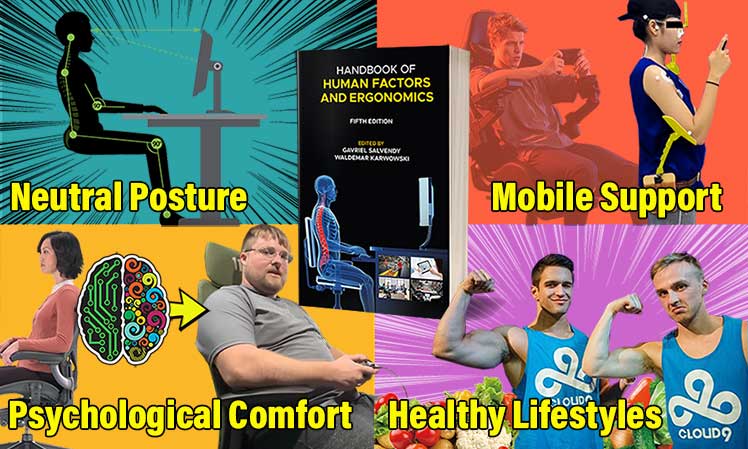
History shows that furniture design evolves in sync with technology. For instance, the Industrial Revolution turned masses of farmers into desk clerks. To support them, the basic office chair emerged in the late 1800s. Its evolution peaked in the mid-1970s:

Fast-forward to 1985: Microsoft released its Windows 1.0 operating system. Six years later, the Internet went live for the masses. Then, sedentary time spent computing skyrocketed(1).
More time spent sitting sparked a rise in the global prevalence of lower back pain. (2). That became a catalyst for an ergonomic tech-driven furniture evolution.
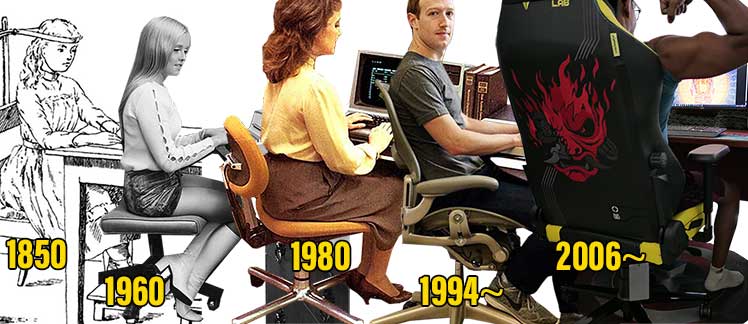
Office chairs with fixed components evolved to include more adjustable features — for a clear neutral posture end. Meanwhile, evidence kept mounting: psychological appeal is a major selling point. When a chair looks more comfortable, users perceive it as so.
4th Industrial (Multi-Device) Revolution
A major shift from cubicle-era desktop computing to multi-device perpetual computing is underway. The World Economic Forum hypes this as the 4th Industrial Revolution. Its aim is to plug the masses into an Internet of Things (IoT).
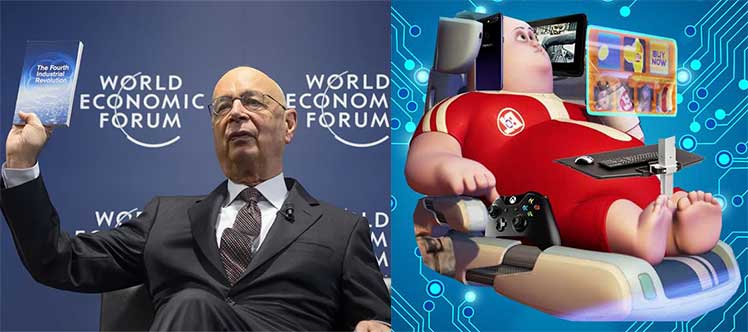
There, humans will exist in a state of perpetual, near-virtual reality. For this to happen, institutional ergonomists must figure out how to equip humans to fit comfortably into the plan.
Physical & Mental Technostress
In late 2021, the Handbook of Human Factors and Ergonomics (HFE) released a major 5th edition update. Since 1994, HFE has been documenting institutional workplace design standards that fit humans into systems.
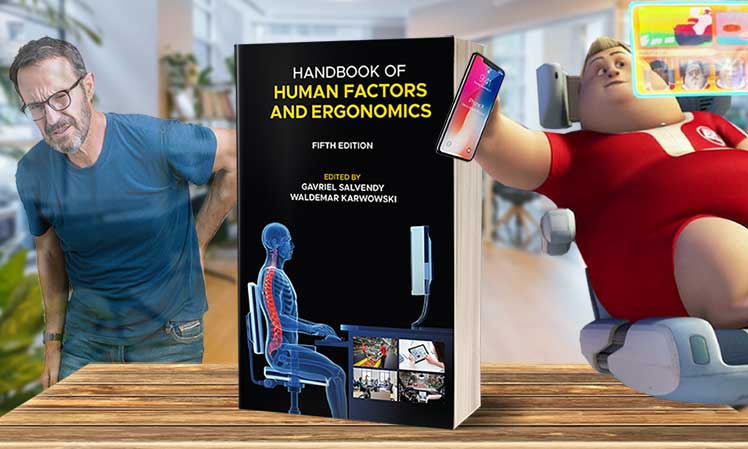
The point is to create productive workspaces with furnishings that customers enjoy. Its 5th edition hops fully on board with the 4th Industrial Revolution concept by identifying two major technostress hurdles in its way:
- Musculoskeletal technostress: excessive desktop computing stresses the lower back; Mobile computing causes text neck (bent neck and rounded upper spine). In a multi-device workplace, both must be addressed concurrently.
- Mental technostress: humans are not equipped to handle constant flows of digital information. Techno-addiction (inability to unplug), depression, and mental burnout are common problems needing solutions.
Notably, the 1600-page Handbook only mentions the word ‘sedentary’ five times. However, sedentary vs active lifestyles are projected to reach crisis levels by 2030!

That reveals a sinister side to institutional ergonomic science. These people work for WEF-style elites and mega-corporations. Instead of a genuine human-centered design approach, it proposes an efficiency model.
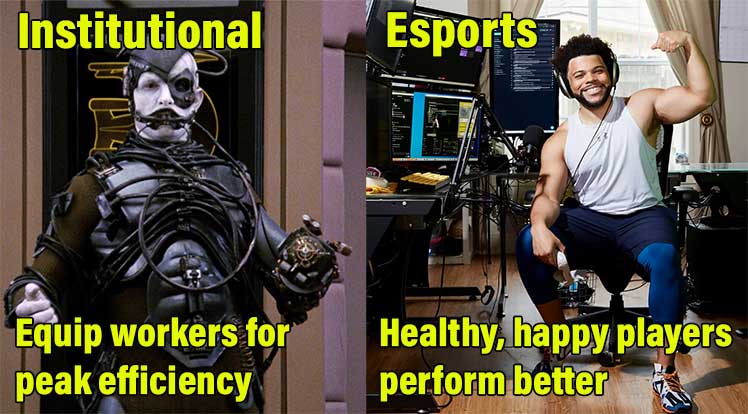
Luckily, a gaming-oriented counterbalance exists. In modern pro esports, top teams compete for millions in prize money. With so much at stake, many employ physical therapy doctors as performance optimization specialists.

These days, many tout a holistic approach involving frequent breaks, regular exercise, and healthy lifestyle habits. Ergonomic furniture plays a definite role, but not a starring one.
2023 Desk Work Trend Highlights
Back in the cubicle-era desktop computing days, good back support was the only quality needed from an ergonomic chair. But these days, good desktop computing chairs are ubiquitous.
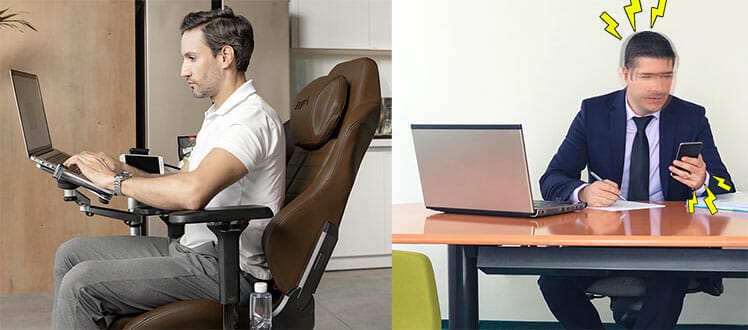
Modern multi-device users (mobile and PC) need more than good back support from their chairs. That’s why the 5th edition Human Factors Handbook now touts multi-device support for the back and neck as the new design priority.
But to mitigate increasing computing times, sedentary computing solutions are also in demand. To that end, top esports docs have taken the lead on performance optimization tactics for desk workers.

Many now tout movement and fitness over the quality of one’s ergonomic chair. With discipline and good habits, any chair with basic adjustable features will do. Shockingly, most tout frequent movement as more important than good posture.
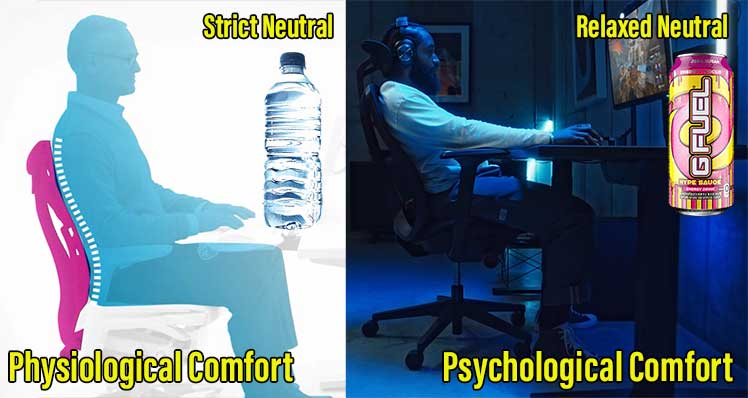
Even more shocking: elite office furniture brands are playing along. Top brands like Herman Miller and Fern are putting out releases that fully endorse relaxed postures over strict ones.
Summary of Key Trends
Here’s a summary of everything to consider when shopping for a new ergonomic chair in 2023:
- Back support innovations have peaked: neutral posture support is a 90s-era technology with no further room to develop.
- Movement beats perfect sitting posture: esports docs hype using neutral sitting as a broad guideline; frequent movement breaks take precedence.
- Psychological appeal is a major factor: the best ergonomic office chairs stand out with flashy extras designed to titillate.
- Mobile computing support is the next innovation frontier: mobile support is the latest institutional design priority — but a chair might not be part of the solution.
- Standing Desks Override Mobile Armrests: instead of mobile-compliant chair arms, users can opt for a sit-to-stand desk.
- Megacorporations make the only legit Tier 1 chairs: mega-corporate chairs from Herman Miller, Steelcase, Haworth, etc have a built-in trust factor.
- The market does not need new chairs: upgrading existing chairs (using the Secretlab model) can generate more hype — and user satisfaction!
Back Support Innovations Have Peaked
The science of neutral sitting postures originally came from NASA in the early 1970s. By 2009, it had been boiled down — for deskwork purposes — into clear-cut biomechanical parameters.
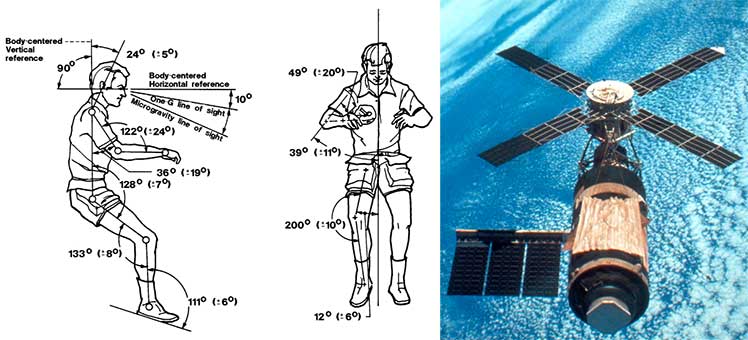
Since then, there’s been little reason for scientists to pore deeper into the science of healthy sitting. That’s why we’ve seen no major seating innovations since then.
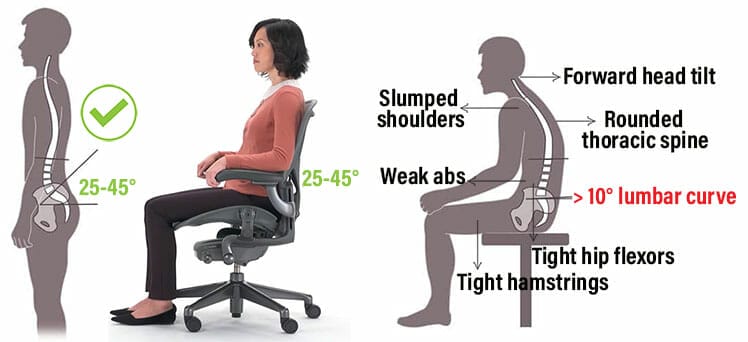
Today, all desktop computing ergo chairs are designed to do the same thing: support healthy neutral postures. With planted feet, a supported lumbar curve, supported arms, and a customizable recline, users are equipped to maintain a 25-45° lower back curve.

It’s not rocket science. Any chair with adjustable lumbar support, adjustable arms, and a reclining backrest can do the job. This has been well-defined for decades.
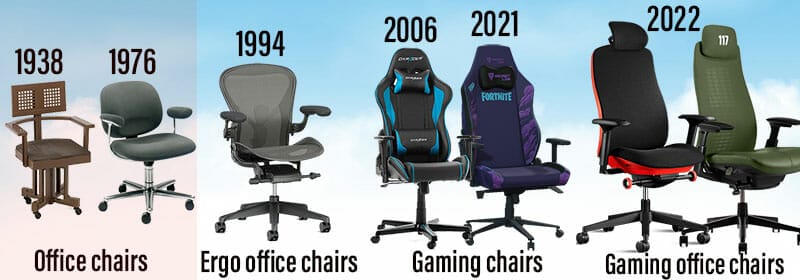
To keep the illusion of freshness over the years, chair makers have riffed countless variations of the same adjustable lumbar + arms and recline basics.
In 2023, psychological appeal (stimulating colors, luxurious upholsteries, fancy features) remains a chair-maker marketing angle — not back support potency.
Esports Optimization: Movement Beats Perfect Posture
As chairmakers focused on aesthetics in recent years, pro esports optimization specialists (not chair makers) have taken the lead on healthy sitting tactics.
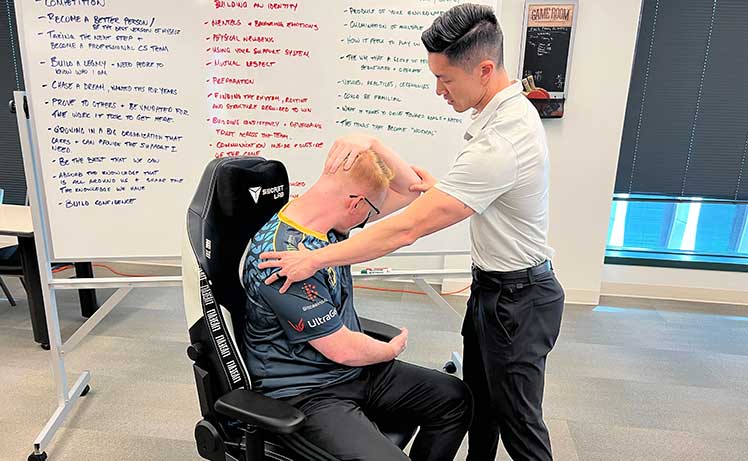
Instead of hyping ergo chairs, most tout frequent movement breaks and healthy lifestyles as greater priorities.
For example, Dr. Jordan Tsai currently does performance optimization consulting for Evil Geniuses. His performance priority list for pro esports players:
This mantra is echoed throughout the esports community. Proper rest, nutrition, and exercise plus a good chair helps players to perform at their best.
In contrast, overspending on a fancy chair without applying good habits may deliver mediocre results.
Esports Doctor Advice To Improve Performance
Top Esports Pros: Quasi-Neutral Postures + Fitness
The world’s top esports teams invest heavily to ensure peak player performance. Most employ nutritionists, sports psychologists, and performance optimization doctors.
Their performance optimization habits serve as a template for hundreds of millions of fans. How they prepare, sit, play, and recover from intense sessions is all publicized.
But look closely at any: most game while using imperfect, semi-neutral postures. For example, Oleksandr ‘s1mple’ Kostyljev plays CS:GO player for Natus Vincere.
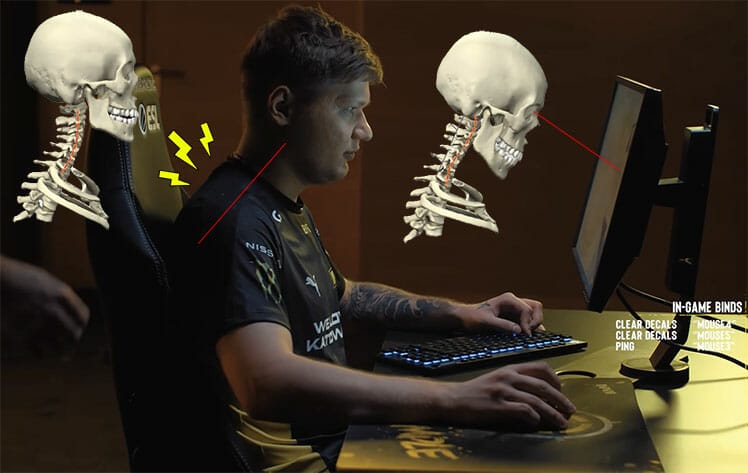
His gaming setup walkthrough(3) bends perfect posture rules. In fact, his sitting style leaves him vulnerable to a gruesome forward neck tilt.
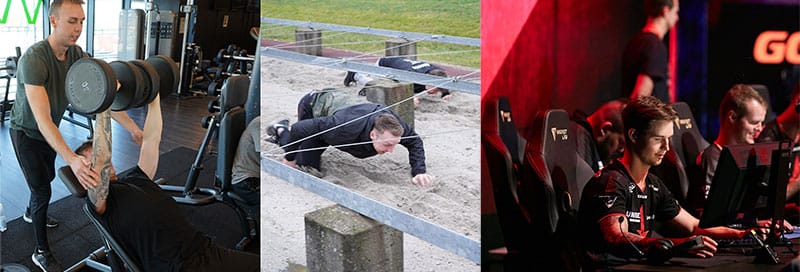
Even so, frequent stretching breaks can relieve built-up gamer stress. Longer exercise breaks help even more. Stacking on clean eating and sound sleep can render imperfect gaming postures irrelevant.
Top Streamers: Quasi-Neutral Postures + Fitness
We can see the same semi-neutral posture + fitness performance strategy among the world’s top Twitch and Youtube streamers.
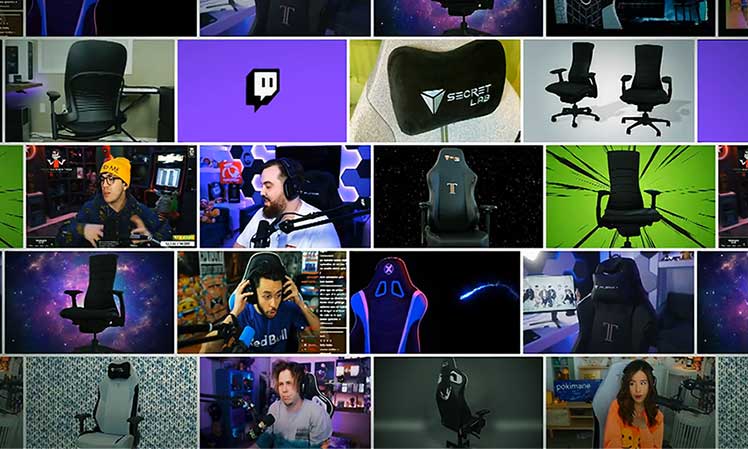
Each and every top-10 streamer is a multi-millionaire with a limitless chair budget. Their picks show great variety without no definitive #1.
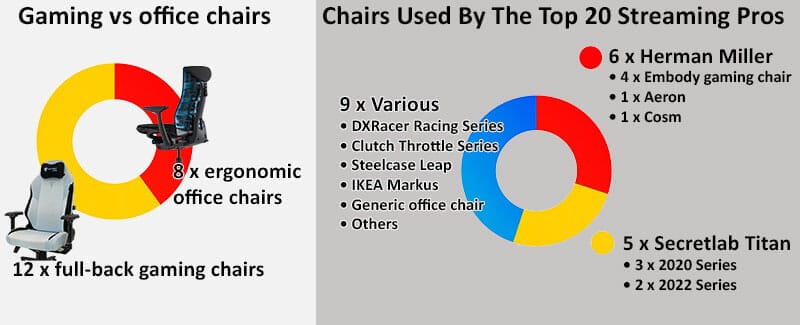
Most of the top 20 also stay sharp by maintaining active, healthy lifestyles. Besides regular exercise routines, most utilize clean eating with plenty of downtime.
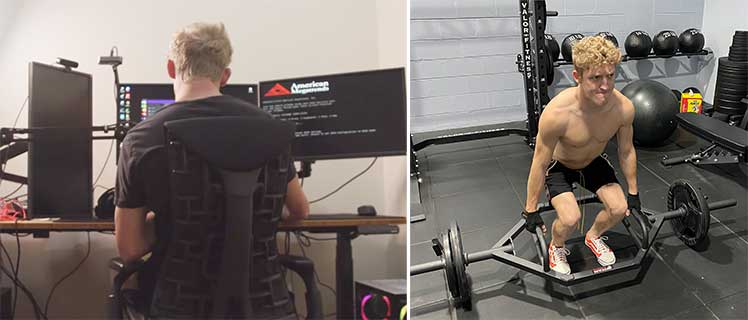
That helps them maintain their elite status by making sure their streaming performances are on-point.
Psychological Appeal Is A Major Factor
A chair’s comfort includes both physiological and psychological properties. When a chair is perceived as more comfortable, users are more likely to find it physically so. For example, consider the classic kneeling stool.
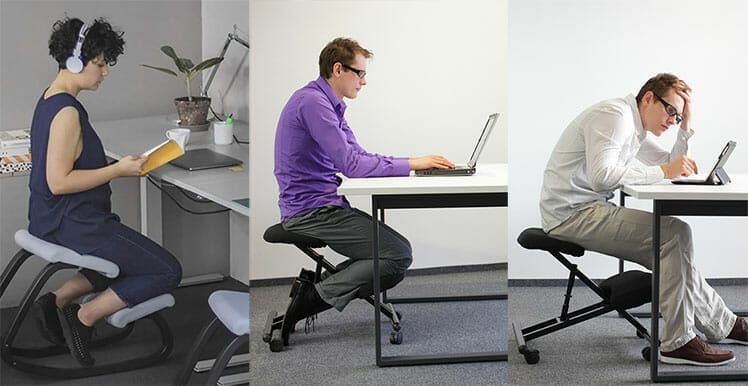
To use one correctly, a user must balance their core muscles to maintain an upright posture. After a few days of practice, muscle memory will kick in to make it a subconscious habit — in theory.
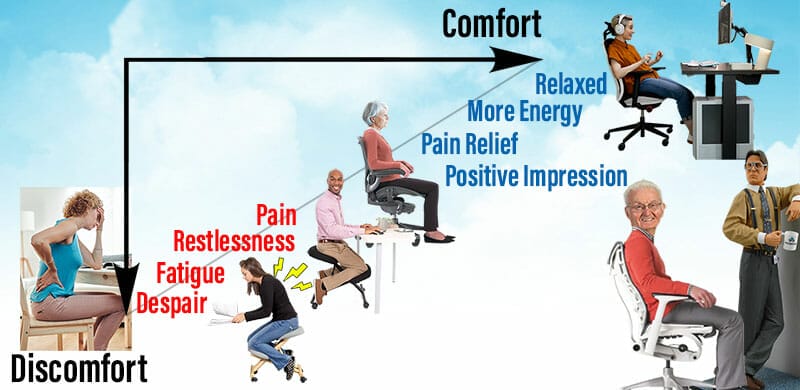
But without a psychological buy-in, users may perceive a kneeling stool as a torture device. Without the motivation to use it correctly, good posture may disintegrate into full-blown discomfort.
Physical Vs Psychological Comfort Factors
In brief, the key physical comfort factors are:
- Seat + Backrest fit: a chair too large or small for your size will deliver mediocre support.
- Lumbar type: a lumbar support system that can fit the height x depth of your particular lumbar curve is ideal (see Best Lumbar Types).
- Upholstery type: good breathability and softness make a chair more pleasant to sit in.
- Padding type: firmer padding types provide better postural stability; squishier, spongier resistance types are more ‘fun’.

Summary of key psychological comfort factors:
- Recline depth: studies show that full-back seats with headrests and deep recline functionality deliver less accurate posture support. Even so, the majority of users find this quasi-neutral style more comfortable.
- Color psychology: different chair color combinations affect the senses in subtly different ways.
- Megacorporation = medical grade: the top-5 office furniture megacorporations are almost universally revered. Buying a chair from a top-5 brand guarantees good back support, prestige, and mega-corporate style good looks.
Pursuit of Seated Comfort: Physical Vs Psychological Factors
Aesthetic Extras Set Top Office Chairs Apart
The importance of psychological appeal is evident in our review of the world’s best ergonomic office chairs. In 2023, prices range from $800 to $2300.
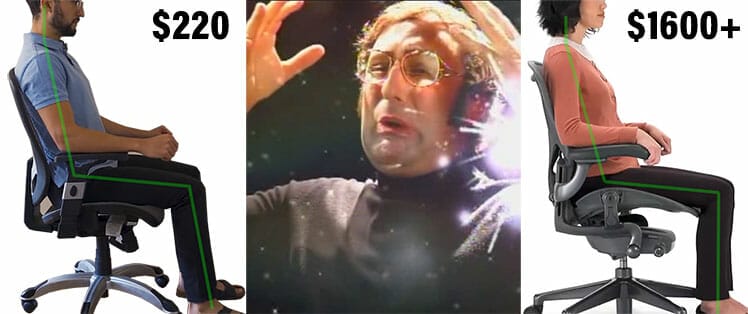
Even so, all do the same job that cheaper models do. Adjustable lumbar & armrests + a reclining backrest = neutral posture support.
As you slide higher up the pricing scale, fancy extras (on top of the neutral posture basics) set the elite chairs apart. For example, the red-hot Haworth Fern pairs an ultra-adaptive backrest with a super-cool viewing window on the back end. I

It gives the Fern a futuristic feel that justifies its No products found. price tag — for some people. As another example, the Price not available Mavix M9 has the same features as the 2011-era Eurotech Ergohuman.
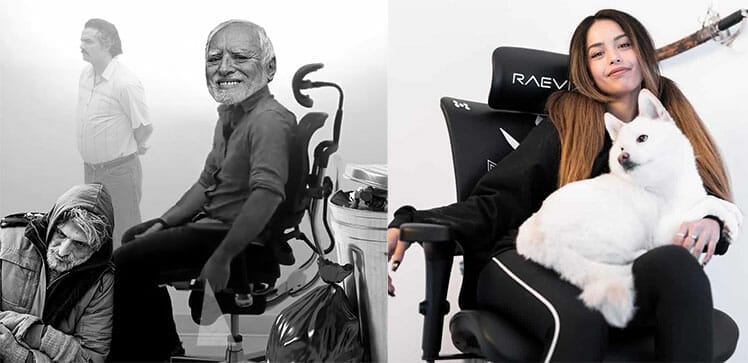
Two things make the M9 freshly relevant: flashy modern aesthetics and famous streamer ambassadors (Valkyrae, Offline TV streamers, NBA players). That trend is repeated throughout our review of the world’s best ergonomic office chairs.

It’s a psychological circus of attractions: ultra-adaptive backrests, fancy seat tilts, ‘high-tech’ upholsteries, and more!
Mobile Computing = Next Support Frontier
Marketing a chair based on its neutral posture support capabilities is played out. That’s why so many waves of flashier versions keep coming out.

Meanwhile, mobile arm support has emerged as an unaddressed priority. The 5th edition Human Factors Handbook cites text neck syndrome as the most pressing ergonomic challenge of the moment.
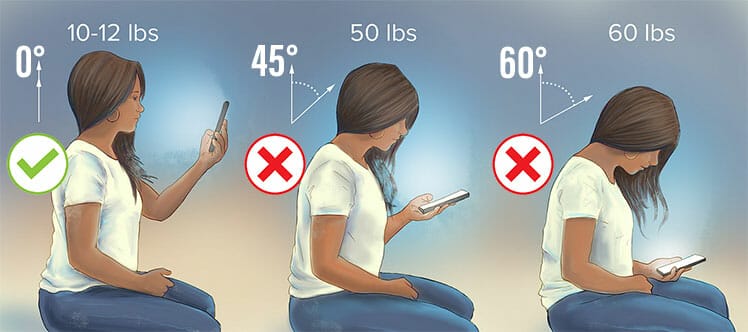
In late 2021, Thailand’s Khon Kaen University publicized a biomechanical blueprint for healthy mobile computing.
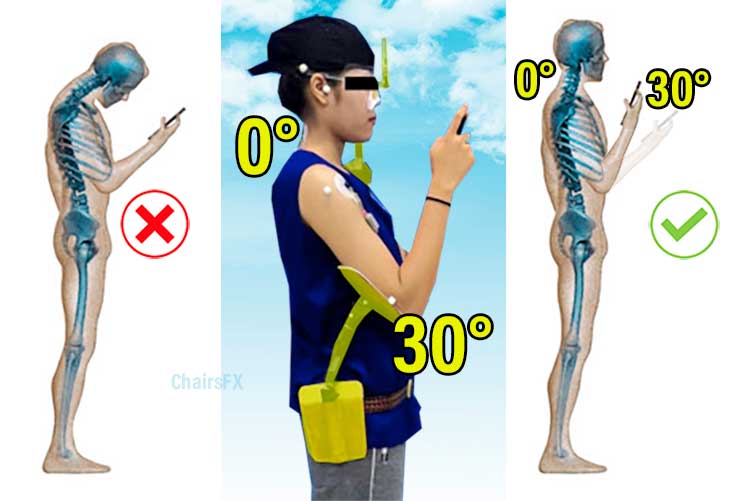
A 0° neck tilt while mobile computing places the least amount of stress on the neck, shoulders, and upper spine. To preserve that while mobile computing, the elbows need support to bend at a 30° angle.
NONE Of The Best Chairs Are Mobile-Compliant
ChairsFX recently tested all of the world’s best ergonomic chairs for mobile compliance. Out of the lot, the Herman Miller Embody performs best an supporting a 0° neck tilt (for my 5’9″/ 177 cm size).
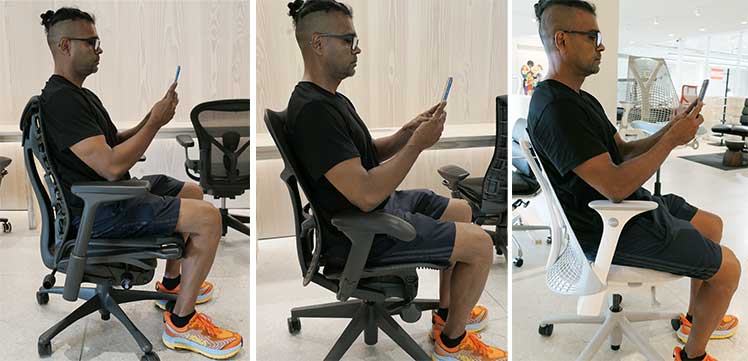
Even so, none of the top models support mobile computing postures than a height-adjustable sit-to-stand desk.
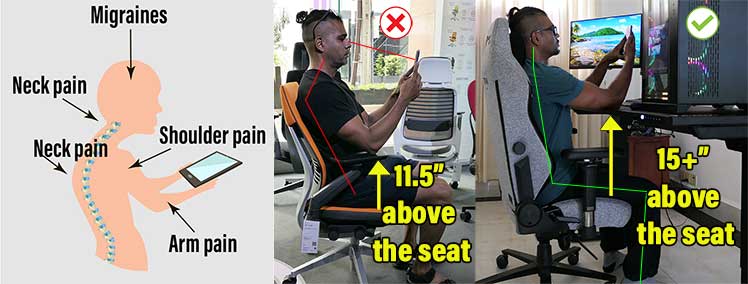
Moving forward, desks look set to assume the mobile support role. Learn more:
Standing Desks Override Armrest Limits
Adding mobile-compliant arms to any existing chair is an easy way for chair makers to bleat fresh hype in 2023. Even so, having mobile-compliant arms on a chair isn’t necessary.
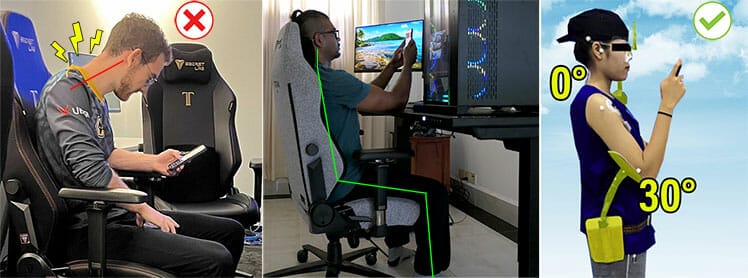
Instead, a multi-device workstation can also incorporate a standing desk. Using one provides sitting and standing mobile support at the push of a button.
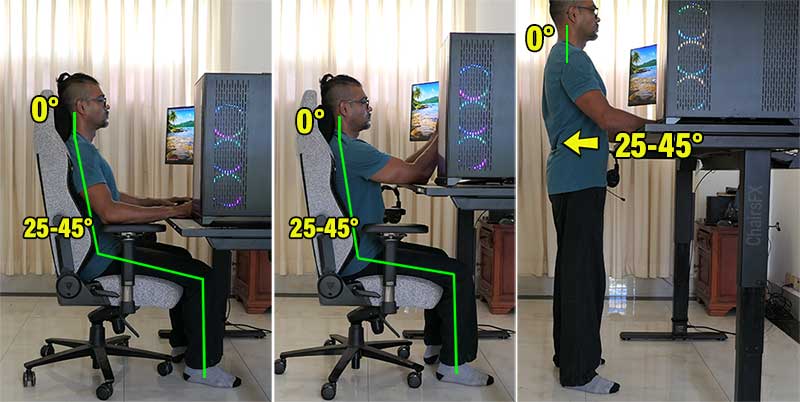
A standing desk can also dramatically boost one’s movement potential while computing. For one thing, shifting from a sitting to a standing position (or vice versa) replicates a squat. That transition puts core muscles to work.
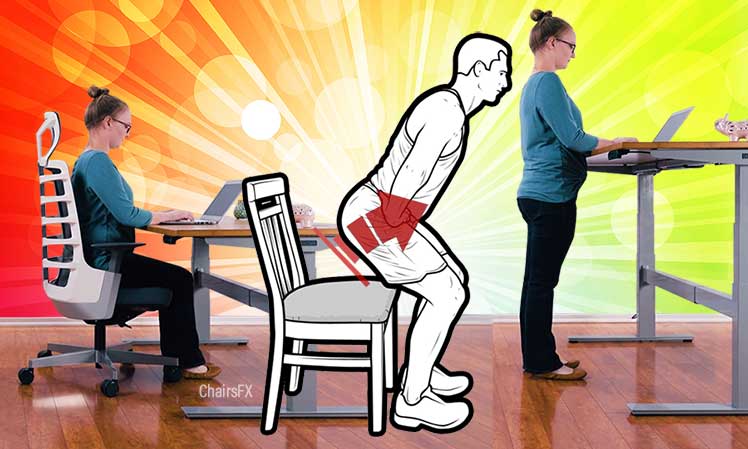
Sitting versus standing also works different muscles to hold the torso up against gravity. That keeps your muscles active and guessing — rather than loving down into fixed, slouchy postures. Learn more:
Megacorporations Make The Most Trustworthy Chairs
The world’s first gaming chair emerged in 2006. Ever since, there’s been a small-but-vocal minority expressing fiery, almost irrational hatred:
In sharp contrast, when megacorporations release their own flashy gaming chairs, they’re widely adored. In 2023, the Haworth Fern Halo edition is currently a hot Youtuber review piece.
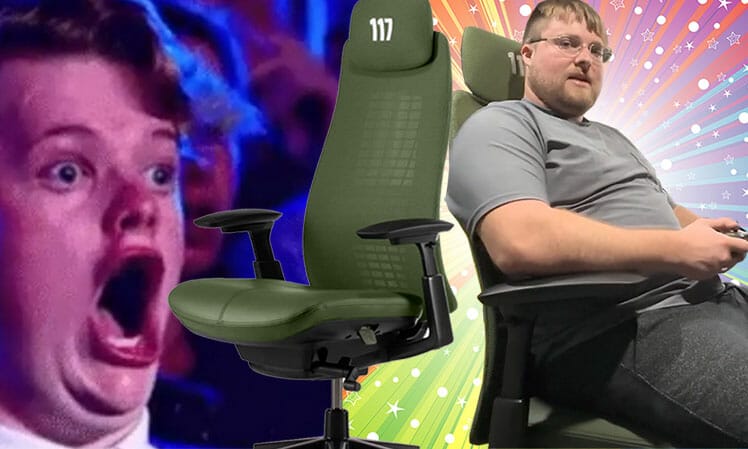
Before the Fern, Herman Miller’s Vantum gaming chair also drew mega-hype. This broke the company’s long-held own posture support standards to embrace a slouchier, more casual style.
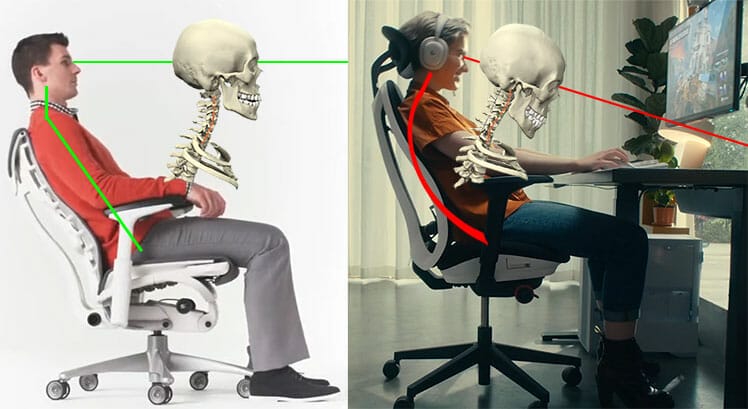
This shows how the top office furniture megacorporations benefit from super-strong brand recognition.
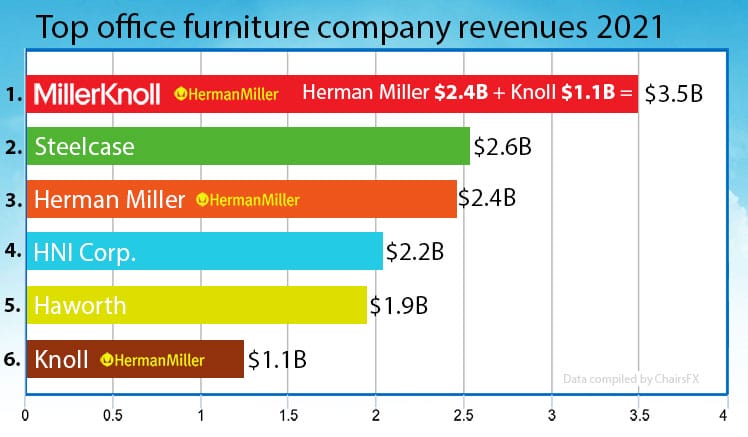
Buying a chair from any top-5 mega-brand auto-implies a world-class build, crisp ergonomic support, and aesthetics fit for the finest Fortune 100 office.
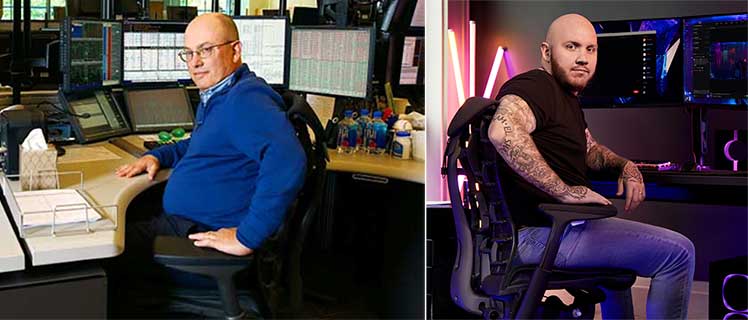
Bottom line: enjoy good back support plus a massive helping of psychological prestige. That attracts a range of high-rollers ranging from hedge fund barons to multi-millionaire mega-streamers.
Make Upgraded Chairs — Not New Models!
Relevant new chair releases in modern times are rare. Most new models rehash 10-year-old neutral posture support concepts. Flashy chair designs are also ubiquitous these days.
Meanwhile, there’s no such thing as a perfect ergonomic chair. None of the world’s top-rated ergonomic chairs are perfect. For example, the Herman Miller Embody and Haworth Fern share the same annoying design flaw.
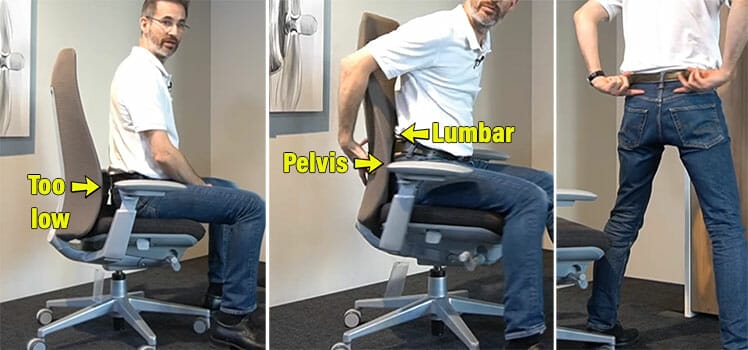
Each has a molded lumbar curve built into its backrest. However, none are height-adjustable! See here: the Haworth Fern’s built-in curve hits extremely low.

Instead of supporting the lower back, its excessively-low lumbar curve forces the hips to curl forward. That compels the entire spine to curl into the shape of a boiled shrimp.
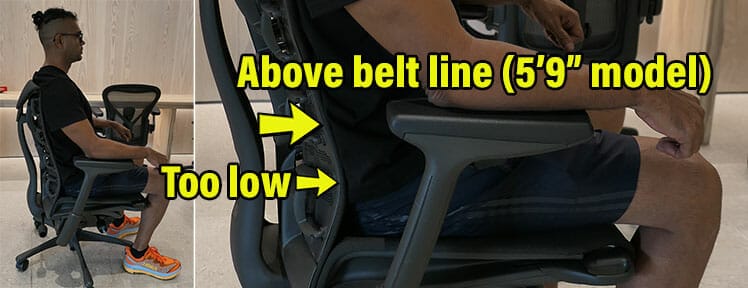
The Embody’s is also too low. Luckily, you can angle it away from the spine so it doesn’t get in the way. In contrast, the Fern’s is stuck in place and (foolishly) non-adjustable.
Secretlab Method: User-Powered Recurring Upgrades
Every two years, Secretlab updates its Titan gaming chairs — partially powered by user feedback. The most recent Titan 2022 came with a drastically-improved lumbar support and headrest, plus major upholstery upgrades.
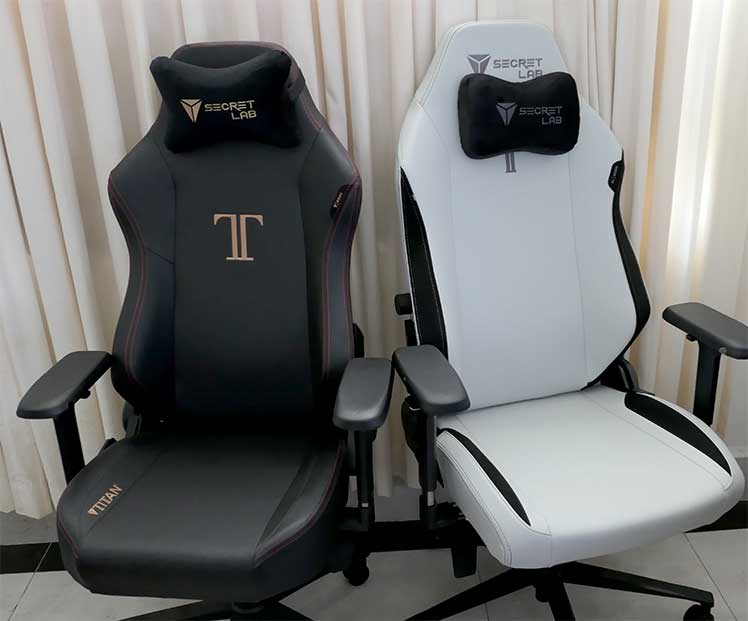
We’ve already predicted the upcoming Titan 2024’s major upgrade: mobile-compliant armrests. Here are suggested improvements for other top-rated chairs:
- Steelcase Gesture: add a height-adjustable backrest.
- Haworth Fern: same as the Gesture.
- Herman Miller Embody: improve the 2D armrest functionality; add a height-adjustable backrest.
- Herman Miller Aeron: remove the overly-restrictive bladed seat edges; make the Posturefit lumbar height-adjustable.
- Steelcase Leap: update the styling; add a height-adjustable backrest.
- Herman Miller Mirra 2: improve the goofy styling.
These updates could refresh the modern-day selling points of each model. That’s an easy way for megacorporations to drum up hype while keeping their chairs in sync with market demands. Check out the current status of the best:
Conclusion
In 2023, the healthy sitting formula for desktop computing remains the same as it ever was. In brief: adjustable lumbar & armrests + a reclining backrest = neutral posture support.

First-time buyers without a firm grasp of this concept are vulnerable to frivolous overspending. For example, the best ergonomic office chairs priced under $700 offer similar functionality as elite models twice the price.

The big difference is that cheaper chairs lack the eye-popping pizazz and frivolous extras as the elite chairs. For example, the Price not available Oak Hollow Aloria combines high-end functionality with a legit lifetime warranty.
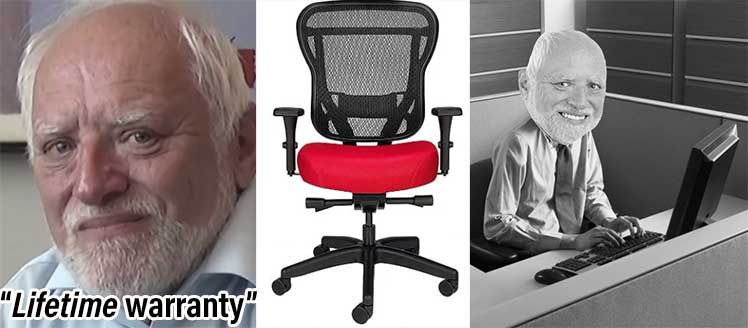
However, given its cubicle-era styling, the Aloria may seem more like a punishment than a bonus! Such grim corpo designs could even scare newbies into splashing out on a super-sexy ($1700+) Embody gaming chair.
But spending more does not buy ‘better’ back support. In this case, it buys a flashy Embody chair — with very subtle settings you’ll need to master.
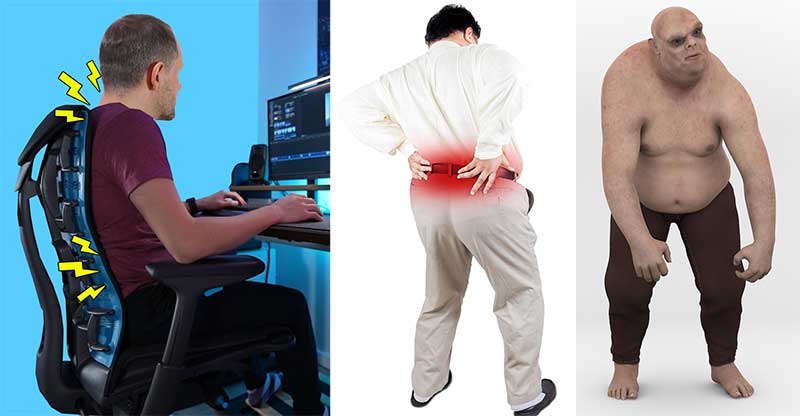
Failure to comply may ruin rather than help your posture! That might mutate your ergonomic dreams into a pricey disaster/ laundry holder.
Summary of 2023 Seating Trends For First-Time Ergo Chair Buyers
In 2023, ergonomic winds are shifting from desktop towards multi-device computing support. During this shift, first-time buyers are vulnerable to overspending on gimmicks they don’t actually need.
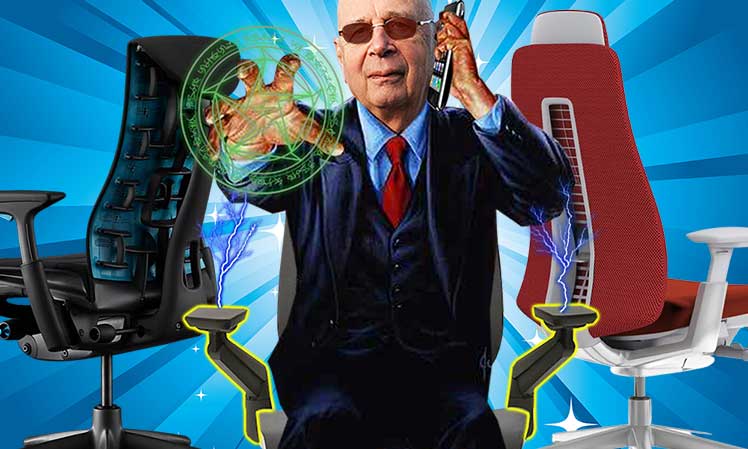
To avoid that, first-time buyers can use the sum of this year’s trends as context for their research.
- Back support innovations have peaked: neutral posture support is a 90s-era technology with no further room to develop.
- Movement beats perfect sitting posture: esports docs hype using neutral sitting as a broad guideline; frequent movement breaks take precedence.
- Psychological appeal is a major factor: the best ergonomic office chairs stand out with flashy extras designed to titillate.
- Mobile computing support is the next innovation frontier: mobile armrest compliance differentiates modern chairs from cubicle-era ones
- Standing Desks Override Mobile Armrests: instead of mobile-compliant chair arms, users can opt for a sit-to-stand desk.
- Megacorporations make the only legit Tier 1 chairs: mega-corporate chairs from Herman Miller, Steelcase, Haworth, etc have a built-in trust factor.
- The market does not need new chairs: upgrading existing chairs (using the Secretlab model) can generate more hype — and user satisfaction!
Finally, if you’re ever confused about what ‘ergonomic’ means (from a desktop computing support perspective), check these definitive guidelines:
Ergonomic Seating Definition From BIFMA, OSHA Etc.
Footnotes
- Stephanie A. Prince, et al. ‘Sedentary behavior surveillance in Canada: trends, challenges and lessons’, Int J Behav Nutr Phys Act 17, 34 (2020). https://ijbnpa.biomedcentral.com/articles/10.1186/s12966-020-00925-8, (accessed 4 Jan. 2023).
- Aimin Wu, et al. ‘Global low back pain prevalence and years lived with disability from 1990 to 2017’, https://ncbi.nlm.nih.gov/pmc/articles/PMC7186678/, (accessed 4 Jan. 2023).
- Youtube, “Set up like S1mple – WITH CFG!” ESL Counter-Strike, March 18, 2022, https://youtu.be/REjATuWa5TY




